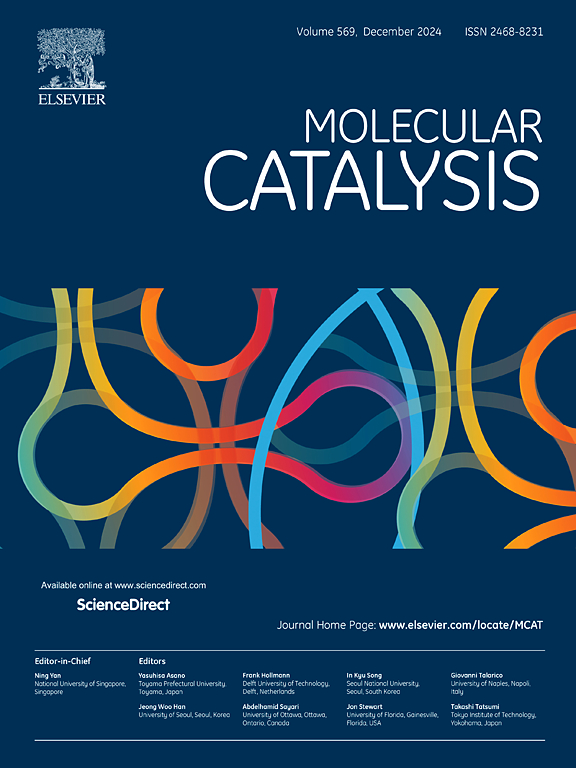利用铈-氧化锆-镨固溶体的结构缺陷来催化消除柴油机烟尘
IF 4.9
2区 化学
Q2 CHEMISTRY, PHYSICAL
引用次数: 0
摘要
在铈基固溶体催化剂中制造结构缺陷是一项重要而又具有挑战性的任务。本文设计了脲辅助合成铈-氧化锆-镨催化剂(CeZrPrOx)的策略,以产生晶格缺陷;并系统研究了其对催化剂结构、物理化学性质和催化柴油烟尘净化活性的影响。拉曼光谱和 X 射线光电子能谱 (XPS) 研究结果表明,脲辅助合成的催化剂(CeZrPrOx-U)具有更高的 Ce3+ 比例(结构缺陷)、氧空位和表面活性氧物种(O22- 和 O2-)。氢的温度编程还原(H2-TPR)和氧的温度编程解吸(O2-TPD)结果进一步证明,CeZrPrOx-U 的氧迁移能力确实得到了增强。与传统的 CeZrPrOx 催化剂相比,CeZrPrOx-U 的体格氧更容易迁移到表面,从而产生表面活性氧。因此,制备的 CeZrPrOx-U 催化剂明显具有更高的柴油烟尘净化催化活性。因此,本研究表明,对 CeZrPrOx 催化剂的结构缺陷进行工程化处理是改善催化剂物理化学性能和提高其烟尘催化消除活性的有效方法。本文章由计算机程序翻译,如有差异,请以英文原文为准。
Engineering the structure defects of ceria-zirconia-praseodymia solid solutions for diesel soot catalytic elimination
Creating structure defects in ceria-based solid solution catalysts is a crucial yet challenging task. Herein, urea-assisted synthesis strategy was designed for ceria-zirconia-praseodymia catalyst (CeZrPrOx) to create lattice defects; its effects on catalyst structure, physical-chemical properties and catalytic diesel soot purification activity were systematically investigated. Raman and X-ray photoelectron spectroscopy (XPS) findings indicate that the urea-assisted synthesized catalyst (CeZrPrOx-U) has remarkably more Ce3+ proportion (structure defects), oxygen vacancies and surface reactive oxygen species (O22- and O2-). Temperature-programmed reduction by hydrogen (H2-TPR) and temperature-programmed desorption by oxygen (O2-TPD) results further prove that the oxygen migration of the CeZrPrOx-U is definitely enhanced. Compared to the conventional CeZrPrOx catalyst, the bulk lattice oxygen of the CeZrPrOx-U can be migrated to the surface to generate surface reactive oxygen species more easily. As a consequence, the prepared CeZrPrOx-U catalyst exhibits obviously better catalytic diesel soot purification activity. Therefore, this study suggests that engineering the structure defects in CeZrPrOx catalyst is an effective approach to improve physical-chemical properties and enhance the soot catalytic elimination activity of the catalyst.
求助全文
通过发布文献求助,成功后即可免费获取论文全文。
去求助
来源期刊

Molecular Catalysis
Chemical Engineering-Process Chemistry and Technology
CiteScore
6.90
自引率
10.90%
发文量
700
审稿时长
40 days
期刊介绍:
Molecular Catalysis publishes full papers that are original, rigorous, and scholarly contributions examining the molecular and atomic aspects of catalytic activation and reaction mechanisms. The fields covered are:
Heterogeneous catalysis including immobilized molecular catalysts
Homogeneous catalysis including organocatalysis, organometallic catalysis and biocatalysis
Photo- and electrochemistry
Theoretical aspects of catalysis analyzed by computational methods
 求助内容:
求助内容: 应助结果提醒方式:
应助结果提醒方式:


